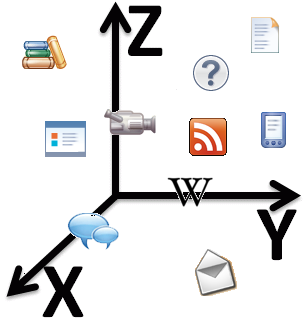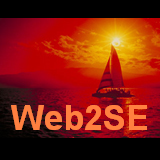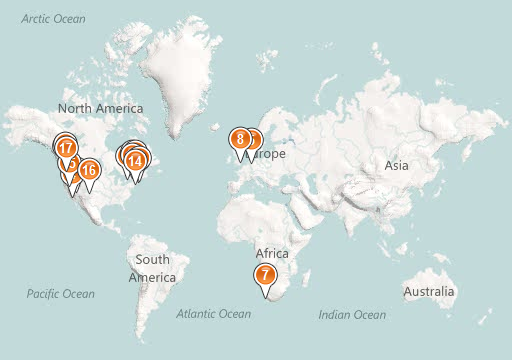 Effective management and exchange of knowledge is key in every software organization. Although various forms of documentation exist, software projects encounter many knowledge management challenges: How should knowledge be distributed? How should knowledge be kept up to date? How should feedback be solicited? How should knowledge be organized for easy access?
Effective management and exchange of knowledge is key in every software organization. Although various forms of documentation exist, software projects encounter many knowledge management challenges: How should knowledge be distributed? How should knowledge be kept up to date? How should feedback be solicited? How should knowledge be organized for easy access?
There is no roadmap for what kind of information is best presented in a given artifact and new forms of documentation, such as wikis and blogs, have evolved. Unlike more formal mechanisms, wikis and blogs are easy to create and maintain. However, wikis and blogs do not offer the same authoritativeness that comes with traditional documentation, and they can become outdated and less concise over time. While the informality of a wiki page or blog is sometimes enough, users often expect reviewed technical articles.
One mechanism that brings various communication channels together is the use of web or community portals. Web portals are not just used in software communities, but are essential to companies, such as Amazon.com, eBay or TripAdvisor, where they enable the development of communities around products. Similarly, many of today’s software projects wish to solicit feedback and input from a broader community of users, beta-testers, and stakeholders. Examples of community portals in software organizations include Microsoft’s MSDN or IBM’s Jazz.
In a paper that Peggy and I will present at ESEC/FSE 2011 in Szeged, Hungary, we report on an empirical study of the community portal for IBM’s Jazz: jazz.net. Using grounded theory, we developed a model that characterizes documentation artifacts in a community portal along the following eight dimensions:
- Content: the type of content typically presented in the artifact.
- Audience: the audience for which the artifact is intended.
- Trigger: the motivation that triggers the creation of a new artifact.
- Collaboration: the extent of collaboration during the creation of a new artifact.
- Review: the extent to which new artifacts are reviewed before publication.
- Feedback: the extent to which readers can give feedback.
- Fanfare: the amount of fanfare with which a new artifact is released.
- Time Sensitivity: the time sensitivity of information in the artifact.
In our study, we focused on four kinds of artifacts: the official product documentation accessible through the web and the product help menus, technical articles available in the jazz.net library, the Jazz team blog, and the team wiki.
These are some of our main findings:
- Content in wiki pages is often stale. Therefore, readers will not look at the wiki for reliable information, but rather use it as a backup option if information is not available elsewhere. To communicate important information to the community, articles and blog posts are better suited.
- The official product documentation is reviewed rigorously. With that in mind, it can serve as the most reliable way to communicate knowledge in a community portal.
- When content is produced by a separate documentation team, updates may not be feasible. In such a case, information may become outdated quickly and can only be fixed with a new product release.
- New blog posts created more “buzz” or fanfare than articles or wiki pages. Thus, if there is a need to make a project’s community aware of something, a blog post may be the best-suited medium.
- Writing can be time-consuming, in particular for technical articles and blog posts. In addition, those media forms may need to undergo a review process. To get content out quickly, the wiki may be the best solution. However, readers may only find wiki pages if they are pointed to them explicitly.
- To solicit feedback from readers, articles and blog posts typically offer more comment functionality than the official product documentation or the wiki.
One of the goals of our research is to provide advice to managers and developers on how to effectively use a community portal. Based on the findings from our study, we make the following recommendations:
- Make content available, but clearly distinguish different media forms.
- Move content into more formal media formats where appropriate.
- Be aware of the implications of different media artifacts and channels.
- Offer developers a medium with a low entry barrier for quick externalization of knowledge.
- Involve the community in a project’s documentation.
- Provide readers with an option to give feedback.
A pre-print of the paper is available here
(© ACM, 2011. This is the author’s version of the work. It is posted here by permission of ACM for your personal use. Not for redistribution. The definitive version will be published in the Proceedings of the European Software Engineering Conference and the ACM SIGSOFT Symposium on the Foundations of Software Engineering (ESEC/FSE) 2011.)
This is the abstract of the paper:
Knowledge management plays an important role in many software organizations. Knowledge can be captured and distributed using a variety of media, including traditional help files and manuals, videos, technical articles, wikis, and blogs. In recent years, web-based community portals have emerged as an important mechanism for combining various communication channels. However, there is little advice on how they can be effectively deployed in a software project.
In this paper, we present a first study of a community portal used by a closed source software project. Using grounded theory, we develop a model that characterizes documentation artifacts along several dimensions, such as content type, intended audience, feedback options, and review mechanisms. Our findings lead to actionable advice for industry by articulating the benefits and possible shortcomings of the various communication channels in a knowledge-sharing portal. We conclude by suggesting future research on the increasing adoption of community portals in software engineering projects.


